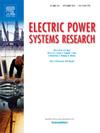能源平衡市场中对称竞价需求侧灵活性的数据驱动量化与聚合
IF 3.3
3区 工程技术
Q2 ENGINEERING, ELECTRICAL & ELECTRONIC
引用次数: 0
摘要
现代电网正在向碳中和和依赖天气发电的净零框架过渡,这就需要大量的需求侧灵活性来管理发电和消费的可变性。本文介绍了一种数据驱动的方法来量化和汇总有效参与能源平衡市场的需求侧灵活性。该方法应用机器学习算法来表征和量化各种家用电器的灵活性,包括可移动负载、恒温设备和电池存储系统,同时考虑动态使用行为。量化的灵活性汇总了家庭中每种电器类型的灵活性,生成了低舒适干扰区和高舒适干扰区的灵活性概况,从而能够详细评估住宅社区内的灵活性潜力。然后,使用顺序混合整数线性规划(MILP)模型对聚合灵活性进行优化,在遵守运营和市场约束的同时,最大限度地提高利用率,包括最大限度地减少用户的不适,并在接下来的四小时内满足上下调节的对称投标要求。本文介绍了两个案例研究:第一个案例研究展示了单个家庭的灵活性量化,说明了电器使用中的动态用户行为,而第二个案例研究展示了多个家庭的总体灵活性,展示了社区层面的潜力。结果验证了该方法在量化和聚合需求侧灵活性方面的有效性,从低舒适区实现了82%的平均利用率,从而减少了用户的不适,促进了平衡市场的战略参与。本文章由计算机程序翻译,如有差异,请以英文原文为准。
Data-driven quantification and aggregation of demand-side flexibility for symmetrical bidding in energy balancing markets
Modern power grids are transitioning towards a net-zero framework with carbon-neutral, and weather-dependent generation, necessitating substantial demand-side flexibility to manage the variability in generation and consumption. This paper introduces a data-driven approach to quantify and aggregate demand-side flexibility for effective participation in the energy balancing market. The methodology applies machine learning algorithms to characterize and quantify flexibility from various household appliances, including shiftable loads, thermostatic devices, and battery storage systems, while considering dynamic usage behavior. The quantified flexibility is aggregated per appliance type across households, generating flexibility profiles for both low and high comfort disturbance zones, enabling a detailed assessment of flexibility potential within a residential community. The aggregated flexibility is then optimized using a sequential Mixed-Integer Linear Programming (MILP) model to maximize utilization while adhering to operational and market constraints, including minimizing user discomfort and fulfilling symmetrical bidding requirements for both up- and down-regulation over the next four-hour pool. Two case studies are presented: the first demonstrates the flexibility quantification of a single household, illustrating dynamic user behavior in appliance usage, while the second presents the aggregated flexibility of multiple households, showcasing community-level potential. The results validate the approach's effectiveness in quantifying and aggregating demand-side flexibility, achieving an average utilization of 82 % from the low comfort zone, thereby reducing user discomfort and facilitating strategic participation in balancing markets.
求助全文
通过发布文献求助,成功后即可免费获取论文全文。
去求助
来源期刊

Electric Power Systems Research
工程技术-工程:电子与电气
CiteScore
7.50
自引率
17.90%
发文量
963
审稿时长
3.8 months
期刊介绍:
Electric Power Systems Research is an international medium for the publication of original papers concerned with the generation, transmission, distribution and utilization of electrical energy. The journal aims at presenting important results of work in this field, whether in the form of applied research, development of new procedures or components, orginal application of existing knowledge or new designapproaches. The scope of Electric Power Systems Research is broad, encompassing all aspects of electric power systems. The following list of topics is not intended to be exhaustive, but rather to indicate topics that fall within the journal purview.
• Generation techniques ranging from advances in conventional electromechanical methods, through nuclear power generation, to renewable energy generation.
• Transmission, spanning the broad area from UHV (ac and dc) to network operation and protection, line routing and design.
• Substation work: equipment design, protection and control systems.
• Distribution techniques, equipment development, and smart grids.
• The utilization area from energy efficiency to distributed load levelling techniques.
• Systems studies including control techniques, planning, optimization methods, stability, security assessment and insulation coordination.
 求助内容:
求助内容: 应助结果提醒方式:
应助结果提醒方式:


